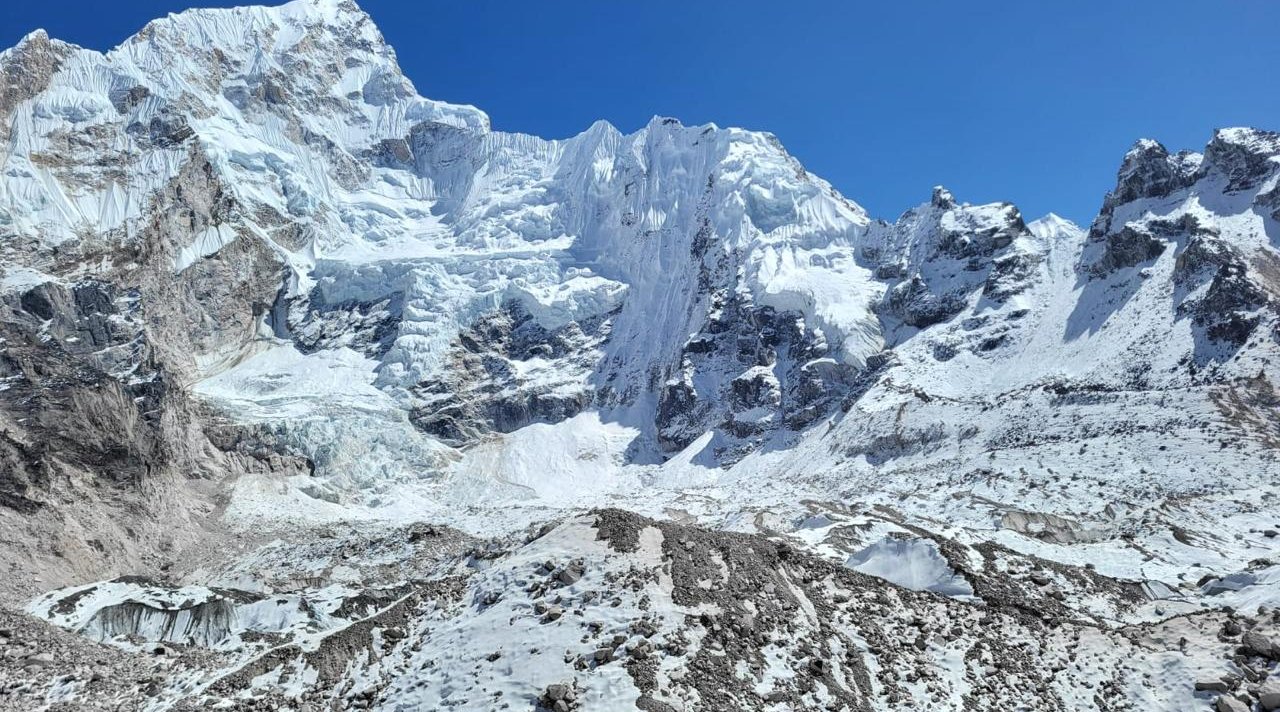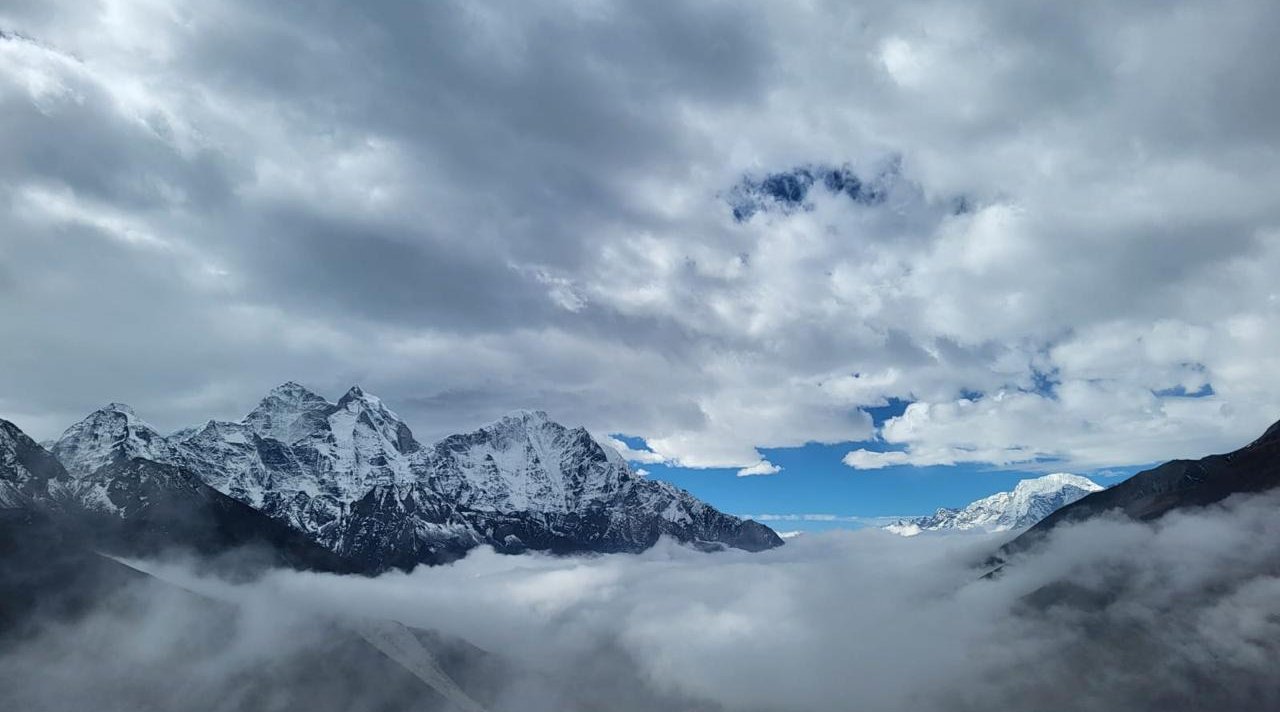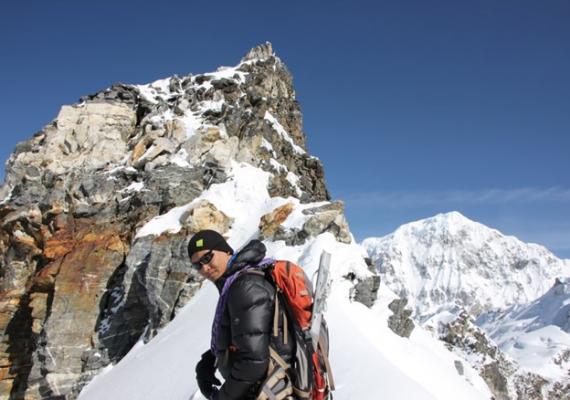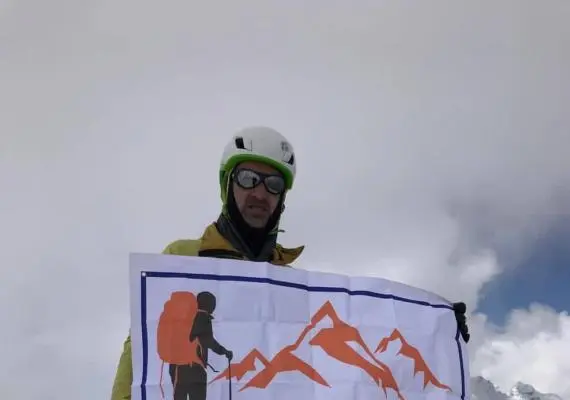Picture yourself standing beside impossibly turquoise waters at 4,800 meters, watching Cho Oyu's massive pyramid reflect perfectly in Gokyo's sacred lakes. Now imagine crossing a technical mountain pass at 5,420 meters, picking your way over loose rock and patches of ice, before ending up at the foot of the world's tallest mountain. This is what makes the Gokyo Chola Pass Everest Base Camp trek so special—it connects three of the Himalayas' most incredible destinations into one seamless adventure.
Most people know about Everest Base Camp, but fewer realize you can approach it through the stunning Gokyo Valley, home to a chain of glacial lakes that seem almost too blue to be real. The 16 day Gokyo EBC trek Nepal route takes you off the beaten path initially, following ancient trading routes through quieter Sherpa villages before joining the classic EBC trail via Cho La Pass—one of Nepal's most challenging but rewarding high-altitude crossings.
What sets this itinerary apart isn't just the destinations, but how they build on each other. You'll start in the peaceful Gokyo Valley, where you can explore the Ngozumpa Glacier—Nepal's longest—and climb Gokyo Ri for panoramic views of four 8,000-meter peaks. Then comes the technical challenge of Cho La Pass at 5,420 meters, where you'll need microspikes and steady nerves to navigate rocky terrain and potentially icy conditions. Finally, you'll experience the pilgrimage atmosphere of the traditional Everest Base Camp approach, culminating with sunrise from Kala Patthar at 5,545 meters.
Best Time to Trek & Seasonal Comparison
Timing your Gokyo Chola Pass Everest Base Camp trek correctly makes a huge difference in your experience. Here's what to expect during each season:
Autumn (September - November)
- Visibility: Crystal clear mountain views, minimal cloud cover
- Temperature: Comfortable daytime hiking, cold nights at altitude
- Trail conditions: Dry and stable, minimal snow on Cho La Pass
- Crowd levels: Peak season, busier tea houses and trails
- Best for: First-time trekkers, photographers, guaranteed clear views
Spring (March - May)
- Visibility: Generally clear, occasional afternoon clouds
- Temperature: Warming weather, pleasant hiking conditions
- Trail conditions: Some residual snow on passes, blooming rhododendrons
- Crowd levels: Busy but slightly less than autumn
- Best for: Wildflower enthusiasts, warmer weather preference
Winter (December - February)
- Visibility: Often clear but bitterly cold
- Temperature: Extreme cold, especially at night (-20°C or lower)
- Trail conditions: Significant snow, challenging Cho La Pass conditions
- Crowd levels: Very few trekkers, some tea houses closed
- Best for: Experienced winter trekkers only, serious cold-weather gear required
Monsoon (June - August)
- Visibility: Frequent clouds, limited mountain views
- Temperature: Warmer but humid, muddy trails
- Trail conditions: Wet, slippery, leech-infested lower sections
- Crowd levels: Very few trekkers
- Best for: Not recommended for this particular route
The consensus among guides and experienced trekkers is clear: autumn and spring offer the best conditions for the 16 day Gokyo EBC trek Nepal route, with autumn slightly favored for guaranteed clear skies.
Difficulty Level & Essential Safety Information
Physical Demands
The Gokyo Chola Pass Everest Base Camp trek sits firmly in the "challenging" category of Himalayan treks. Here's what you need to know:
- Daily walking: 4-8 hours per day over varied terrain
- Maximum elevation: 5,545m at Kala Patthar
- Technical sections: Cho La Pass requires basic mountaineering skills
- Glacier walking: Direct contact with Ngozumpa Glacier surface
- Weather exposure: Extreme cold, wind, and potential storms
Cho La Pass: The Technical Challenge
The Cho La Pass altitude 5420 m crossing represents this trek's most demanding day. Recent trekker feedback consistently emphasizes the need for proper preparation:
"You'll need microspikes no matter if you have boots or trail runners. The approach to the pass has loose rock and potentially ice, and the descent on the Dzongla side can be treacherous without proper traction."
Essential considerations for Cho La Pass:
- Early start: Begin around 6 AM for optimal conditions
- Proper footwear: Mountaineering boots or sturdy hiking boots with microspikes
- Layering system: Temperature can vary 30°C between dawn and midday
- Navigation: Follow cairns carefully, especially in poor visibility
- Group travel: Never attempt alone, stay with your guide
Altitude Acclimatization Strategy
This itinerary follows proven acclimatization principles to minimize altitude sickness risk:
- Gradual ascent: Never sleep more than 500m higher after 3,000m
- Rest days: Built-in acclimatization in Namche and Gokyo
- Active recovery: Climb high, sleep low principle on exploration days
- Hydration: Minimum 3-4 liters of fluid daily at altitude
- Recognition: Know AMS symptoms and descent protocols
Common Altitude Sickness Symptoms & Management
Mild AMS (Acute Mountain Sickness):
- Headache, nausea, fatigue, loss of appetite
- Management: Rest, hydrate, avoid further ascent until symptoms resolve
Moderate AMS:
- Severe headache, vomiting, coordination problems
- Management: Immediate descent of 300-500m, medical evaluation
Severe AMS (HACE/HAPE):
- Confusion, difficulty breathing, fluid in lungs
- Management: Emergency descent, evacuation if necessary
The 16 day Gokyo EBC trek Nepal itinerary provides enough time for proper acclimatization, but individual responses vary. Always communicate honestly with your guide about how you're feeling.
Essential Gear for Glacier Walking & High Passes
Footwear & Traction
- Mountaineering boots: Insulated, crampon-compatible recommended
- Microspikes or crampons: Essential for Cho La Pass and glacier sections
- Gaiters: Prevent snow entry into boots
- Extra socks: Wool or synthetic, multiple pairs
Clothing Layers
- Base layers: Merino wool or synthetic moisture-wicking
- Insulation: Down or synthetic puffy jacket for extreme cold
- Shell layer: Waterproof, windproof outer jacket and pants
- Accessories: Warm hat, sun hat, glacier glasses, liner gloves, insulated gloves
Technical Equipment
- Headlamp: Essential for early morning Cho La Pass crossing
- Trekking poles: Invaluable for stability on loose rock and ice
- Sleeping bag: Rated to -15°C minimum for comfort
- Water bottles: Insulated to prevent freezing at altitude
Safety & Navigation
- First aid kit: Personal medications, altitude sickness remedies
- Emergency whistle: Standard safety equipment
- Personal locator beacon: Optional but recommended for solo sections
Recent trekker experiences consistently emphasize that proper gear makes the difference between struggle and enjoyment on this challenging route.
What's Included with Himalayan Hero Adventures
Professional Guide Services
- Licensed, experienced trekking guides with extensive route knowledge
- English-speaking guides trained in wilderness first aid
- Cultural interpretation and Sherpa community connections
- Daily weather and route condition assessments
- Emergency evacuation coordination if needed
Porter Support & Logistics
- Professional porter teams following fair wage practices
- Porter insurance and proper equipment provision
- Weight distribution and gear management
- Camp setup and meal coordination at tea houses
- Buffer day management for weather or health delays
Permits & Documentation
- All required trekking permits (TIMS, Sagarmatha National Park, Khumbu)
- Permit processing and government liaison
- Documentation support for insurance claims if needed
- Emergency contact coordination with authorities
Accommodation & Meals
- Tea house accommodation throughout the trek (twin-sharing basis)
- Three meals daily: breakfast, lunch, dinner
- Tea house selection based on quality and safety standards
- Dietary accommodation for vegetarians and common allergies
- Hot drinks and snacks during walking days
Safety & Communication
- Comprehensive first aid kit carried by guides
- Altitude monitoring and health assessments
- Emergency evacuation insurance coordination
- Satellite communication device for emergencies
- Weather monitoring and route adjustment capabilities
Cultural Experiences
- Monastery visits and cultural site interpretation
- Sherpa family interactions and cultural exchanges
- Traditional ceremony participation opportunities
- Local market visits and craft demonstrations
- Photography guidance for cultural sensitivity
Additional Services
- Airport transfers in Kathmandu
- Pre-trek briefing and gear check
- Certificate of completion
- Group celebration dinner in Lukla
- Equipment storage in Kathmandu during trek
- Post-trek debriefing and feedback session
Optional Add-ons
- Everest Link internet access during trek (additional cost)
- Single room supplements where available
- Extra porter for personal gear above standard allowance
- Professional photography services
- Extended Kathmandu sightseeing tours
Ready for Your Himalayan Adventure?
Walking through the Gokyo Valley, crossing Cho La Pass, and watching sunrise from Kala Patthar creates an adventure that changes how you see both mountains and yourself. This 16 day Gokyo EBC trek Nepal connects three of the Himalayas' most spectacular destinations while providing enough time for proper acclimatization and cultural immersion.
You'll share meals with Sherpa families whose ancestors have called these mountains home for generations, walk on the Ngozumpa Glacier where few tourists venture, and stand at Everest Base Camp knowing you earned your place there through two weeks of dedicated mountain travel.
The Gokyo Chola Pass Everest Base Camp trek isn't just about reaching famous destinations—it's about the journey between them. Those quiet moments beside turquoise lakes, the satisfaction of crossing a technical mountain pass, and the camaraderie built around tea house stoves create memories that last far beyond the physical achievement.
Contact Himalayan Hero Adventures today to reserve your spot or customize this itinerary for your group. Whether you're planning for peak autumn conditions or prefer the warmer spring weather with blooming rhododendrons, we'll help you prepare for the trek that transforms ordinary travelers into mountain adventurers.
Our experienced guides know every section of this route intimately, from the best photo spots beside the Gokyo Lakes trek Nepal to the safest crossing strategies for Cho La Pass altitude 5420 m. We'll ensure you have the support, knowledge, and cultural connections that make this journey unforgettable for all the right reasons.






